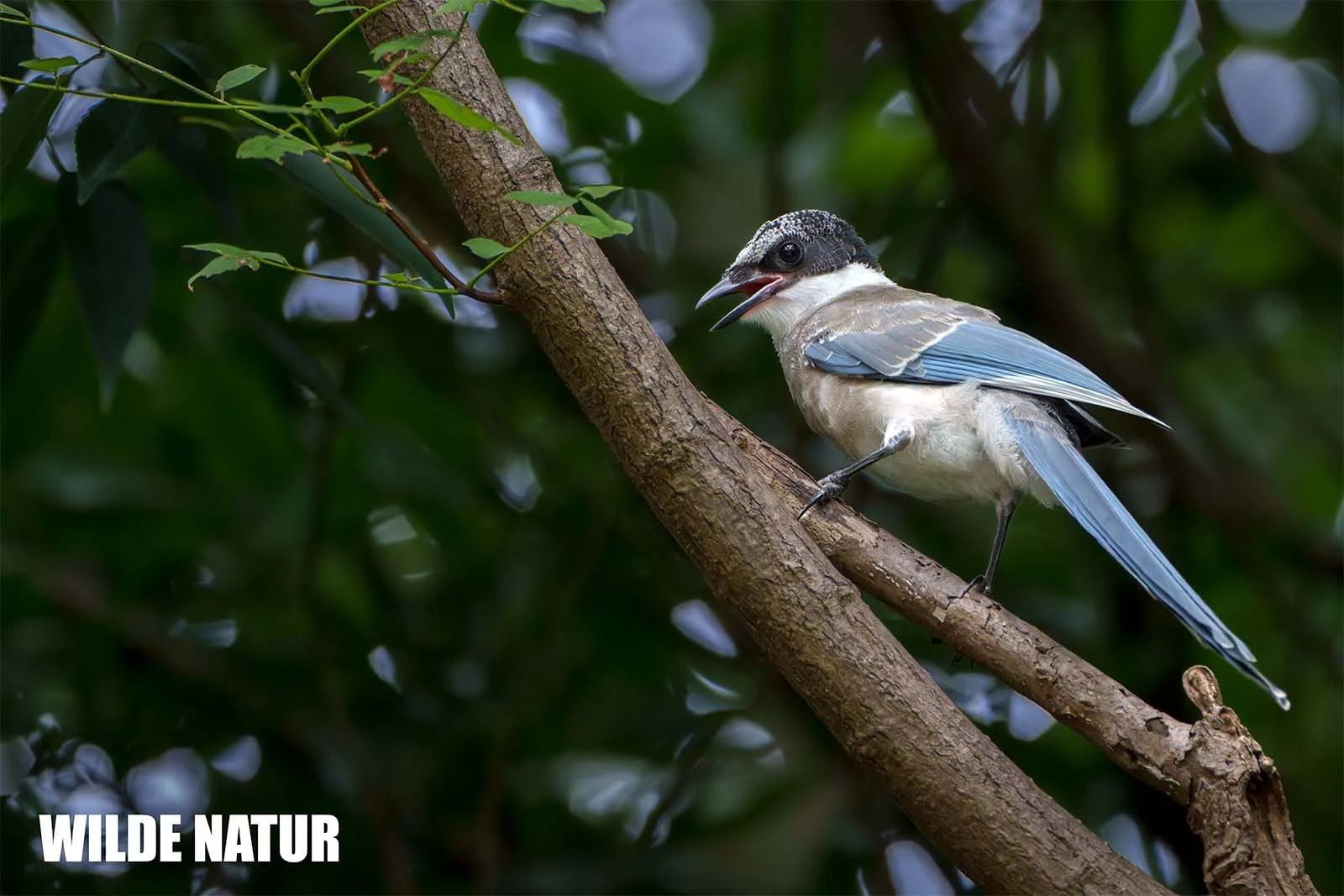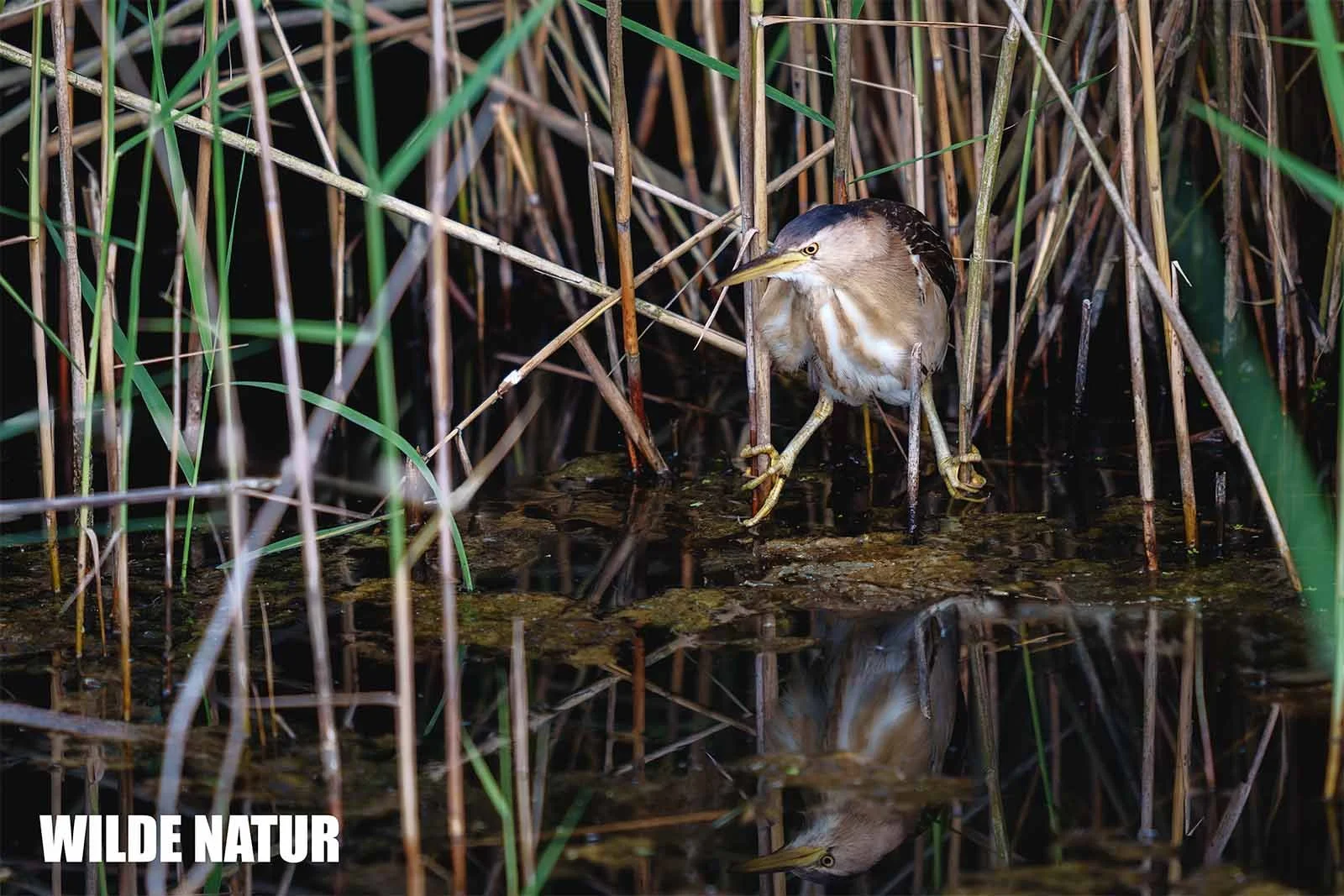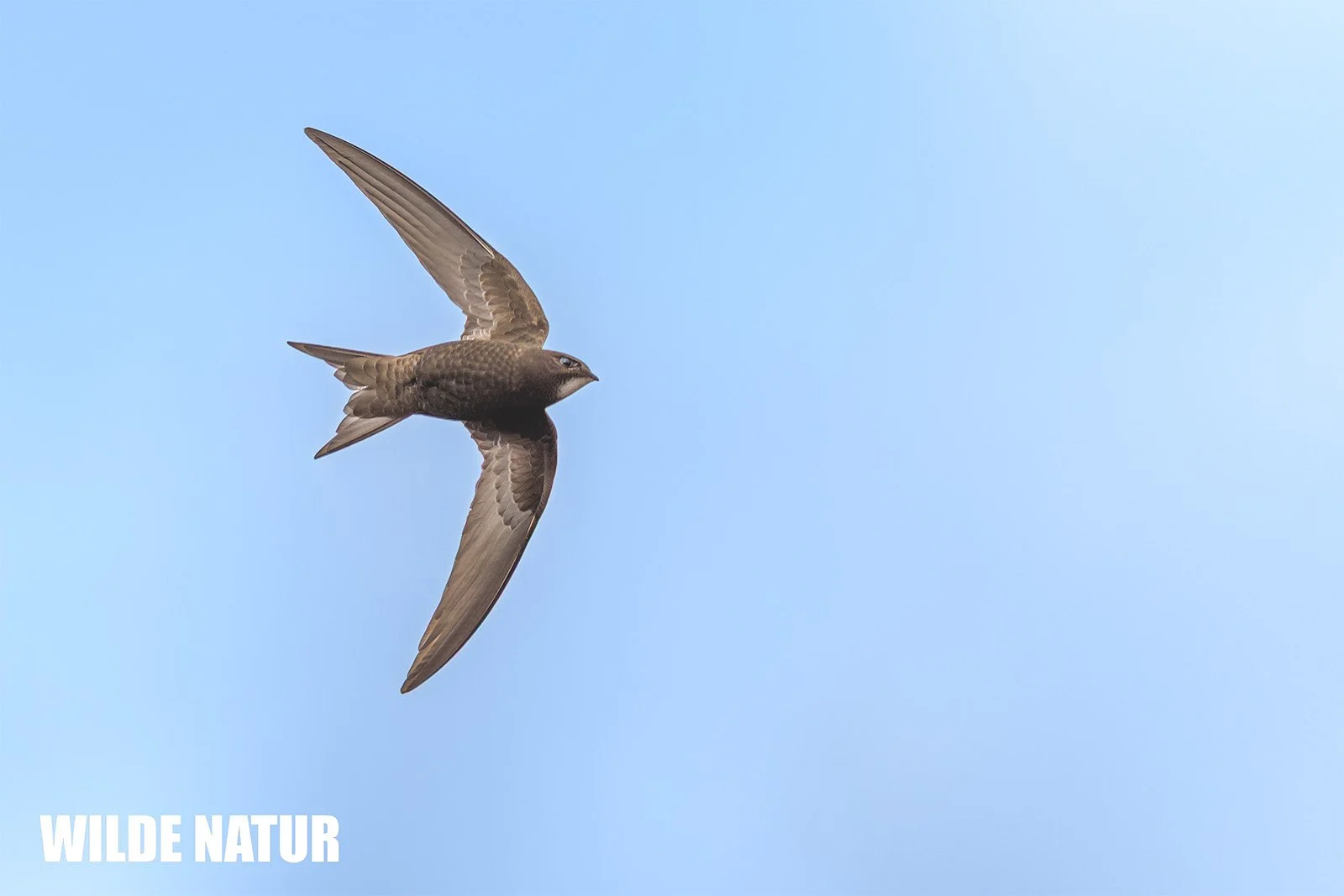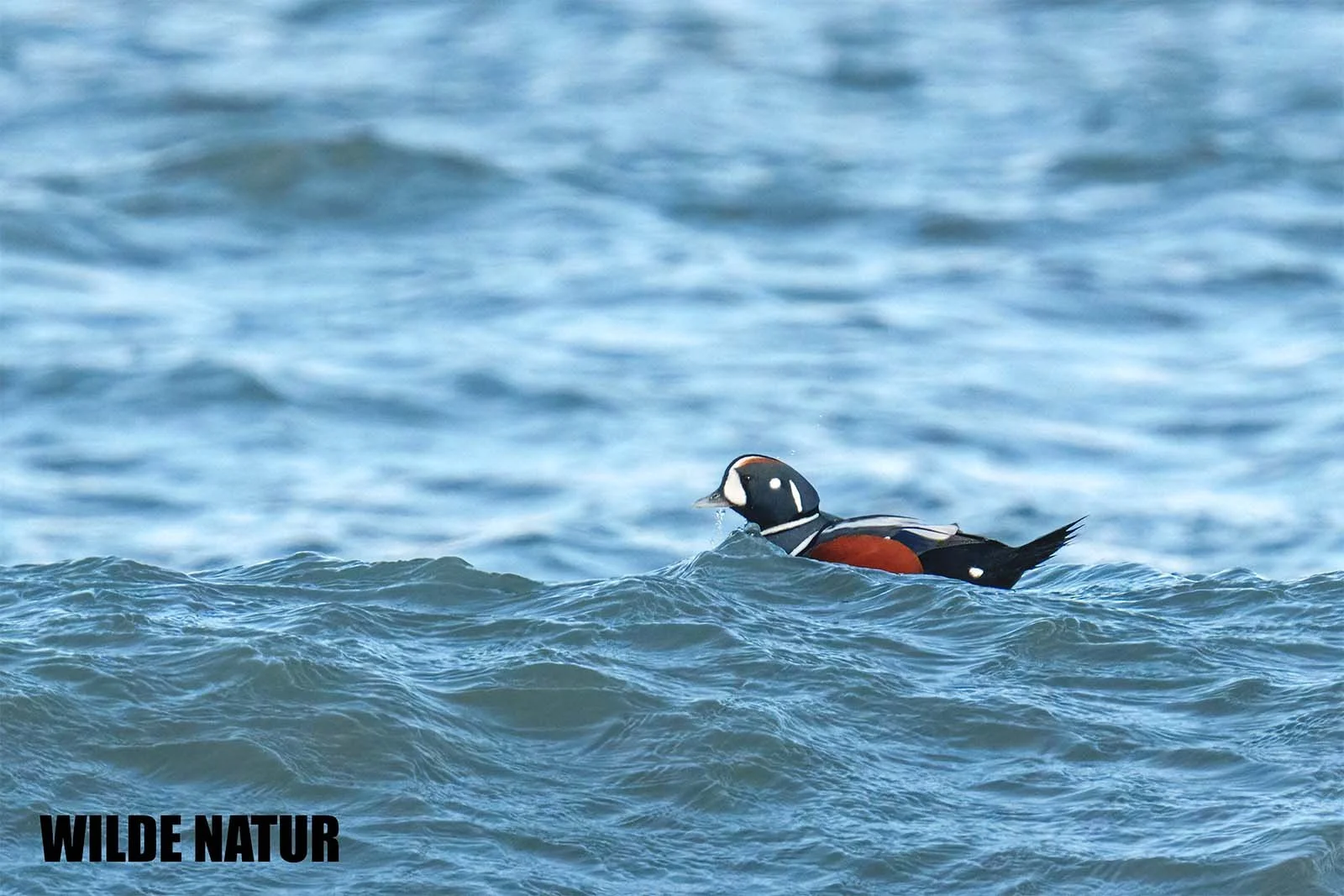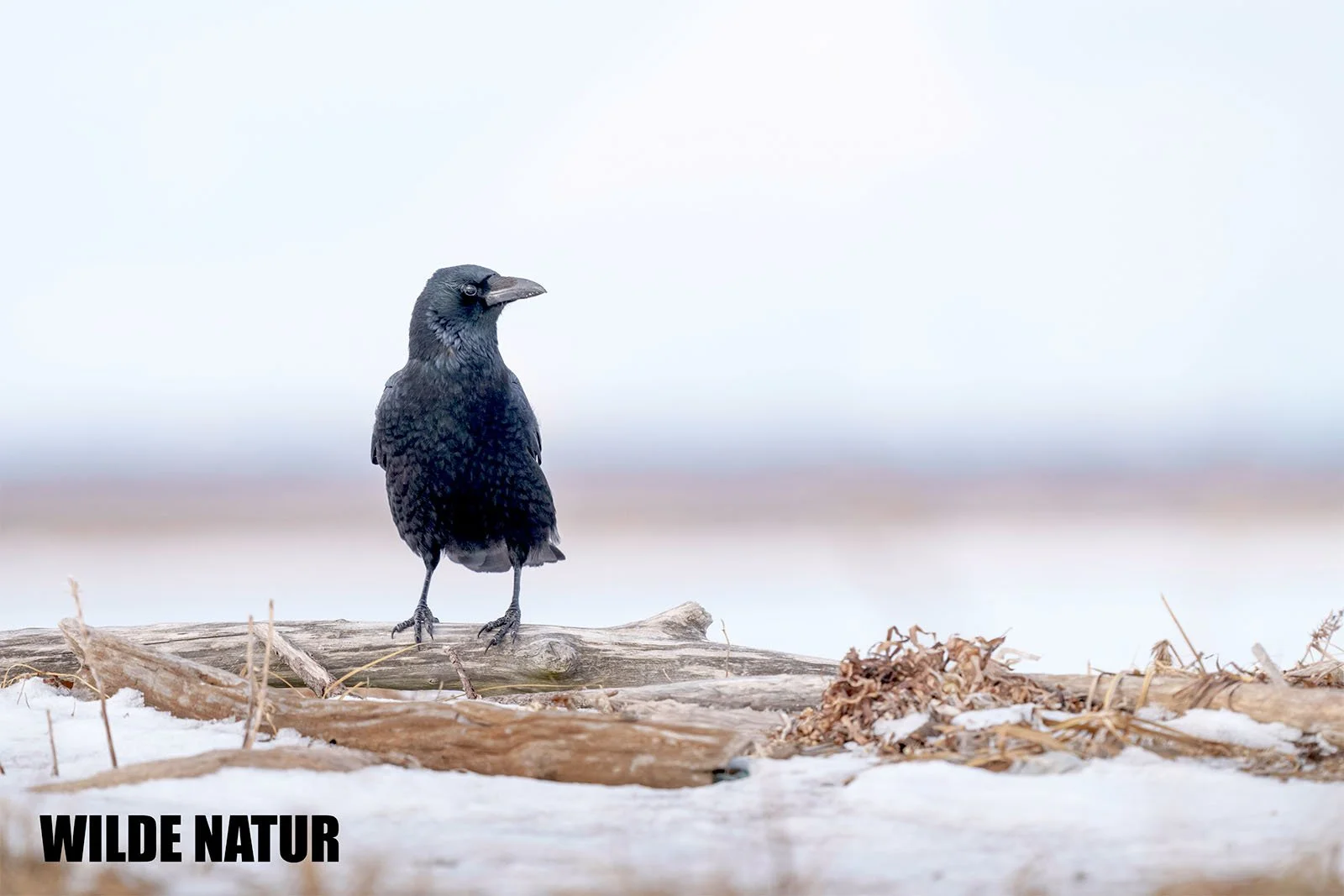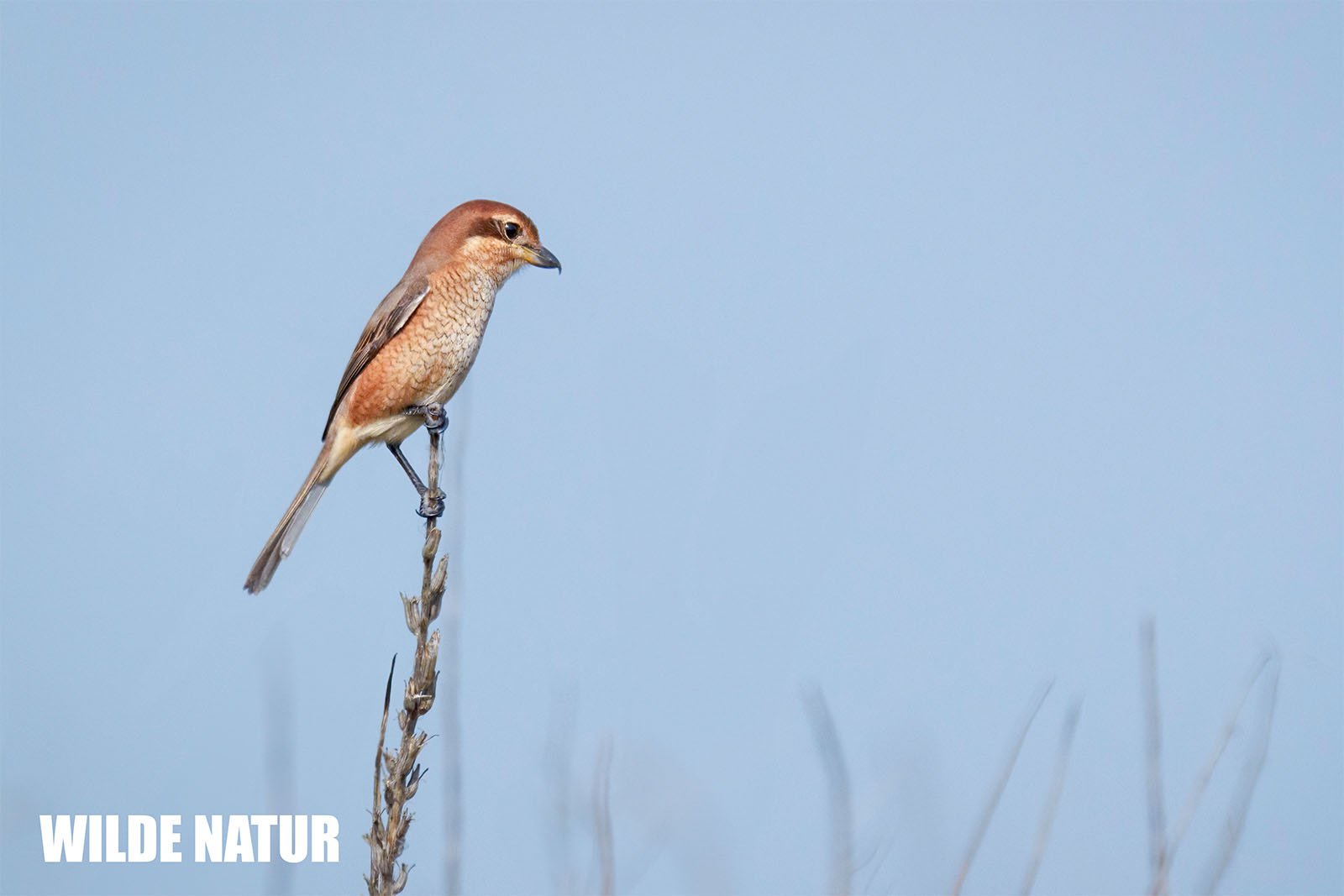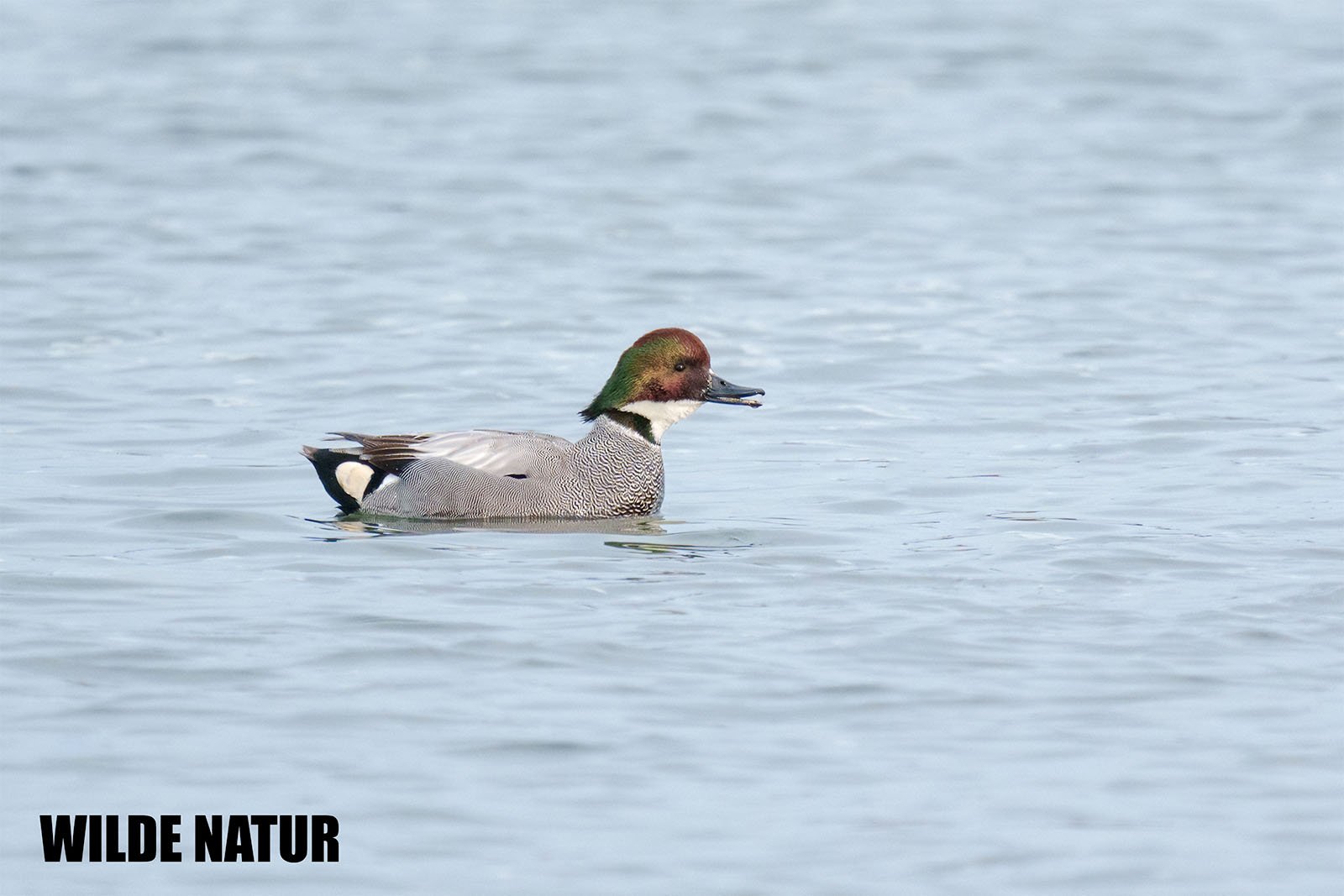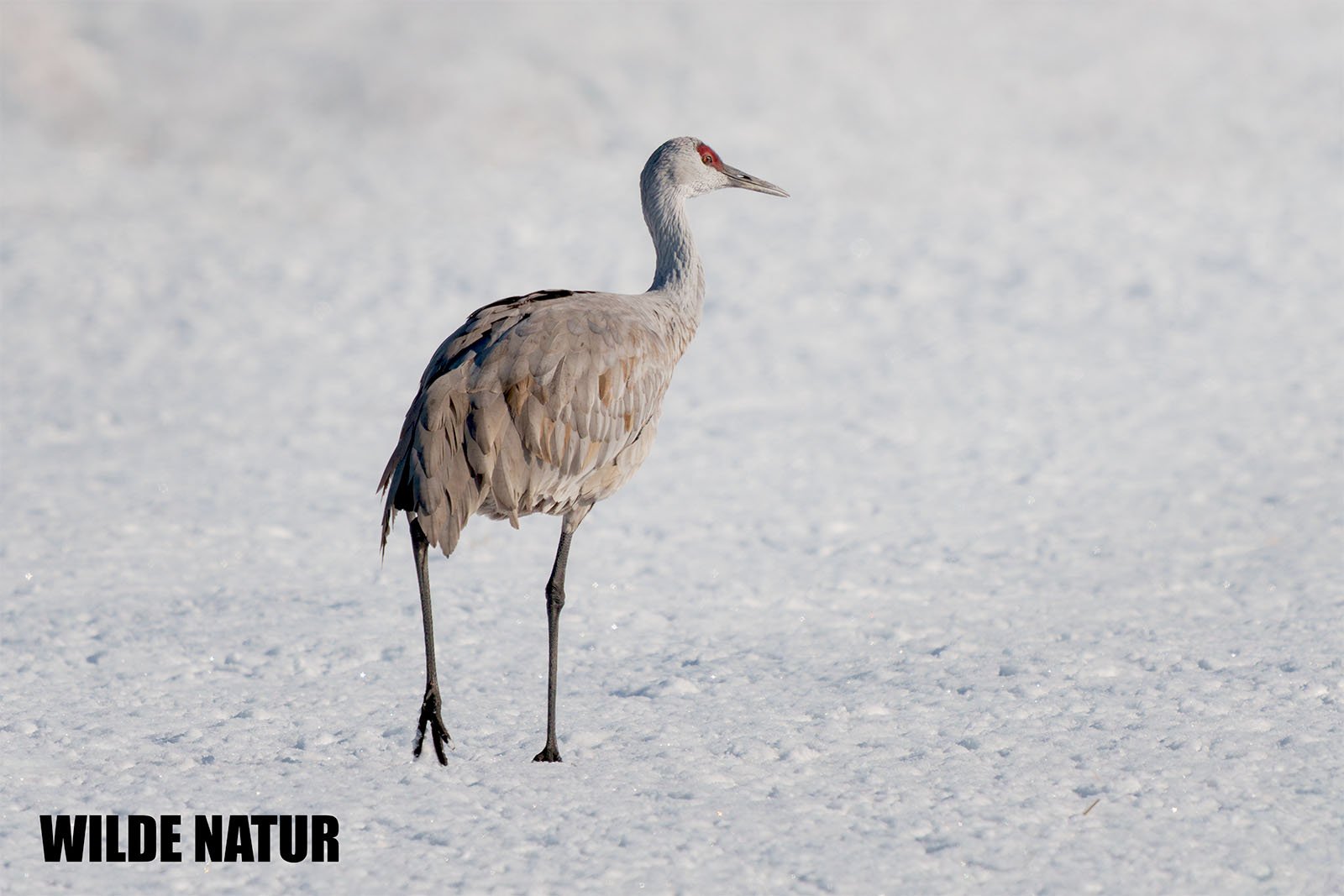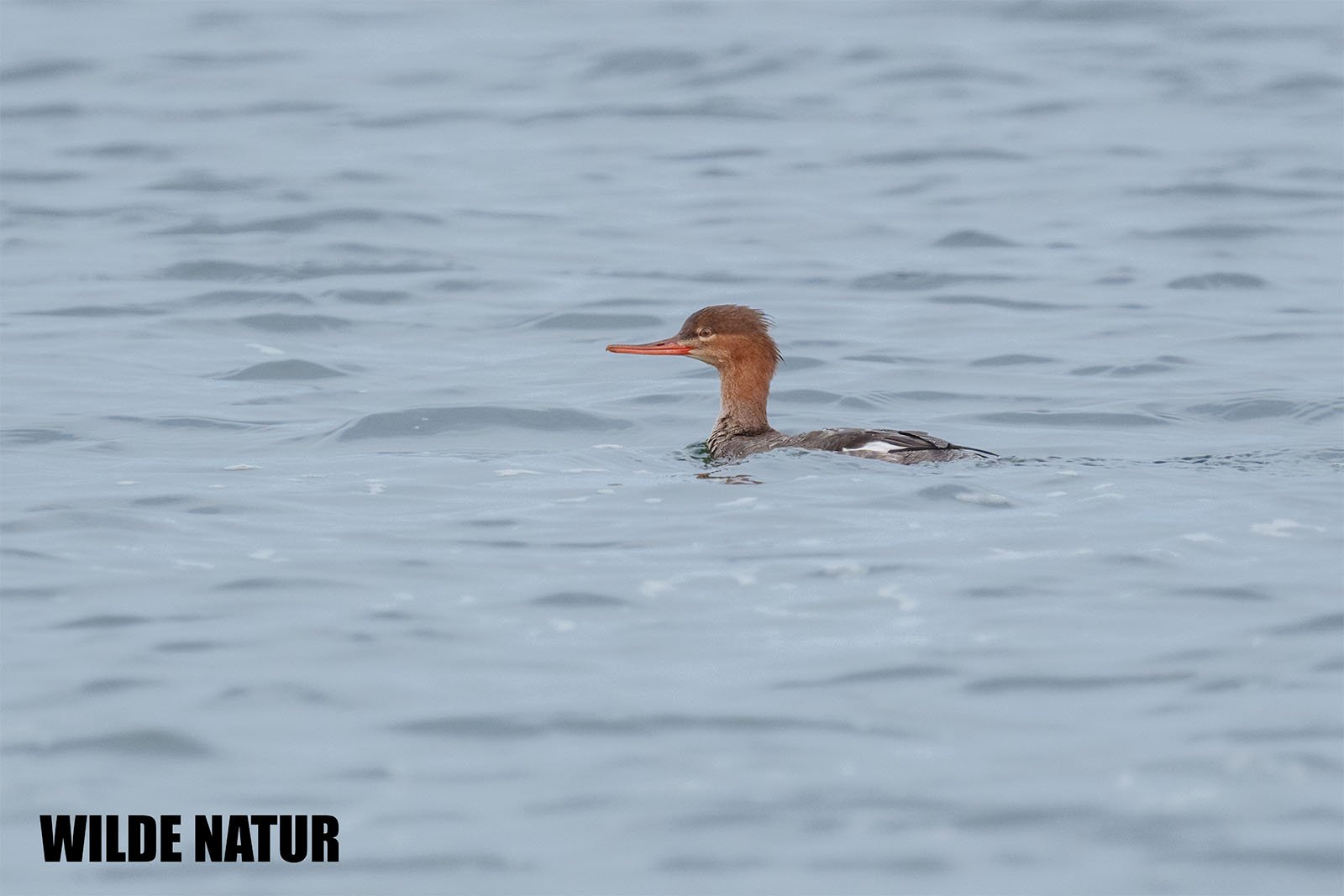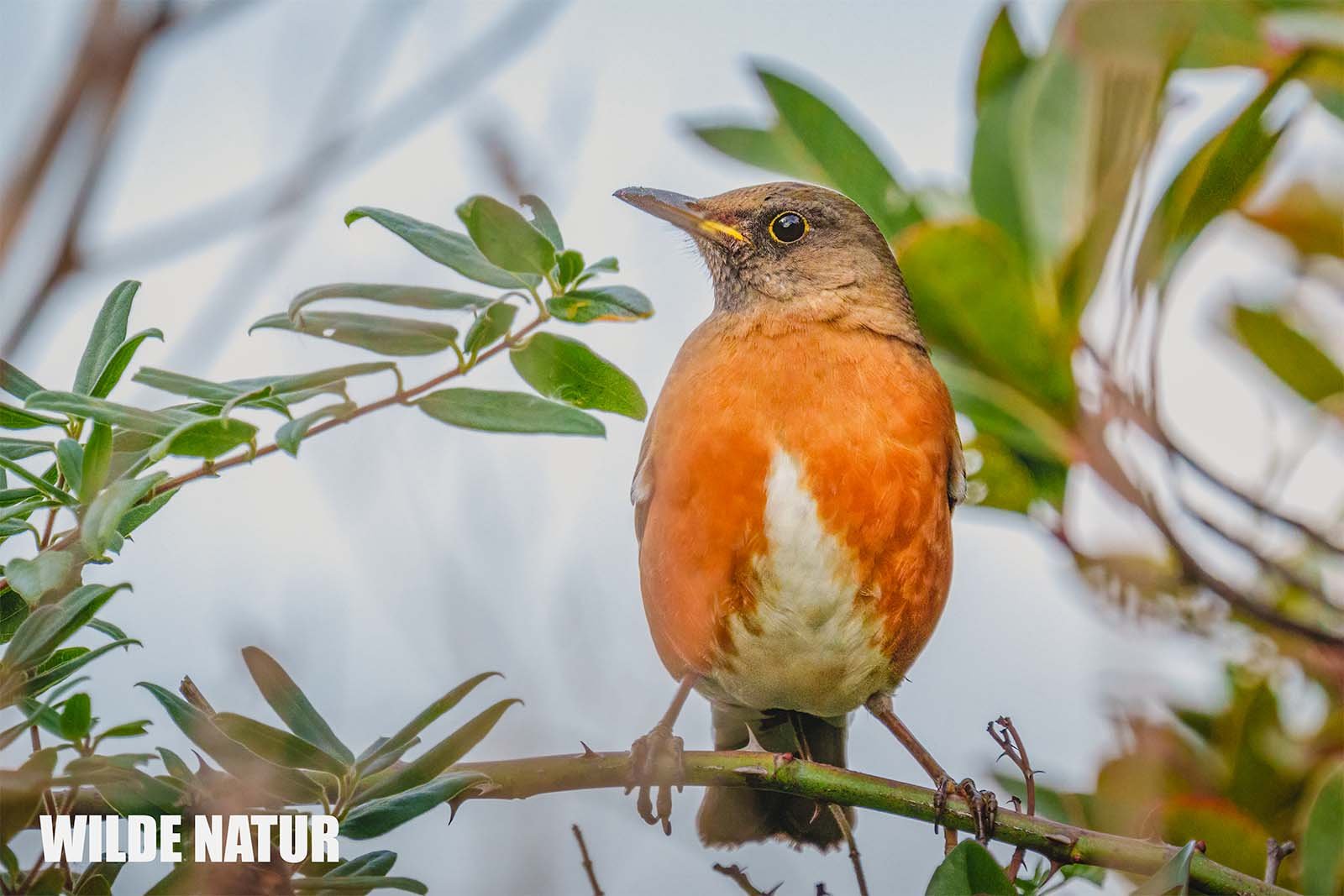Black-necked grebe (Podiceps nigricollis)
Black-necked grebe (Podiceps nigricollis)
Black-necked Grebe – The Elegant Diver with Golden Ear Tufts
The Black-necked Grebe (Podiceps nigricollis) is a striking waterbird, best recognized by its golden ear tufts during the breeding season. A skilled diver, it prefers shallow waters with dense vegetation. During the breeding season, it builds floating nests from aquatic plants and often carries its chicks on its back.
Table of Contents
- Key Facts
- Appearance & Features
- Habitat & Distribution
- Breeding & Nesting
- Hunting & Diet
- Shortlist – All Key Facts at a Glance
- FAQ – Frequently Asked Questions
- Conclusion
1. Key Facts
- Size: 28–34 cm
- Features: Steep forehead, slightly upturned bill, distinctive golden ear tufts in breeding plumage
- Habitat: Shallow lakes with dense vegetation, often breeding in colonies near gulls or terns
- Breeding: Builds floating nests from aquatic plants; chicks are carried on the parents’ backs
- Diet: Aquatic insects such as dragonfly larvae, beetles, and mosquitoes
2. Appearance & Features
The Black-necked Grebe is a medium-sized grebe with a unique profile, characterized by its steep forehead and slightly upturned bill.
Breeding Plumage (Spring & Summer)
- Black head and neck with striking golden ear tufts extending outward
- Dark back, lighter underparts
- White wing patches visible in flight
Non-Breeding Plumage (Autumn & Winter)
- Grayish-white underparts, uniform gray-brown upperparts
- Darker cap on the head, less contrasting neck coloration
Juvenile Plumage
- Similar to non-breeding adults, but with softer color transitions and less contrast
3. Habitat & Distribution
Breeding Grounds:
- Shallow, vegetated lakes with floating plants
- Often nests near gull or tern colonies for added protection
Wintering Areas:
- Large inland lakes and coastal waters
During the breeding season, colonies of over 100 pairs can form when food is abundant.
4. Breeding & Nesting
- The nest is made of aquatic plants and either floats or is anchored to reeds.
- Both parents share incubation duties, and chicks are often carried on their backs, even while diving.
5. Hunting & Diet
Black-necked Grebes primarily feed on aquatic insects, including:
- Dragonfly larvae, beetles, mosquito larvae
- Occasionally small crustaceans and aquatic plants
Hunting Technique
- Dives skillfully underwater, searching for prey near the bottom or among vegetation.
6. Shortlist – All Key Facts at a Glance
- Size: 28–34 cm
- Features: Golden ear tufts, steep forehead, slightly upturned bill
- Habitat: Shallow lakes with dense vegetation
- Nest: Floating nest made of aquatic plants
- Diet: Aquatic insects such as dragonfly larvae, beetles & mosquitoes
- Special Trait: Carries chicks on its back
7. FAQ – Frequently Asked Questions
Where can you observe the Black-necked Grebe in the UK and Europe?
Good locations include shallow lakes with reeds and floating vegetation, such as the Federsee Nature Reserve in Germany or wetland areas in northern Europe.
How can you distinguish the Black-necked Grebe from the Great Crested Grebe?
The Black-necked Grebe is smaller, has a steeper forehead, a slightly upturned bill, and in breeding plumage, its golden ear tufts are unmistakable. The Great Crested Grebe is larger and has a more elongated silhouette.
Why do Black-necked Grebes carry their chicks on their backs?
Young chicks are not yet fully waterproof. Carrying them on their backs helps protect them from predators and prevents them from getting too cold.
Are Black-necked Grebes migratory birds?
Yes, they migrate to warmer regions in winter, often gathering in large flocks on inland lakes and coastal waters.
Is the Black-necked Grebe endangered?
While not currently threatened, habitat loss due to wetland drainage and pollution poses a risk to its population.
8. Conclusion
The Black-necked Grebe is a fascinating waterbird, known for its striking breeding plumage and unique parenting behavior. Its golden ear tufts make it easily recognizable, especially during the breeding season.
During spring and summer, it thrives in shallow, plant-rich lakes, often nesting in colonies. Its ability to carry chicks on its back makes it unique among grebes.
Tip for Birdwatchers: Look for its bright red eyes and distinctive diving behavior to spot this elegant waterbird in its natural habitat.



